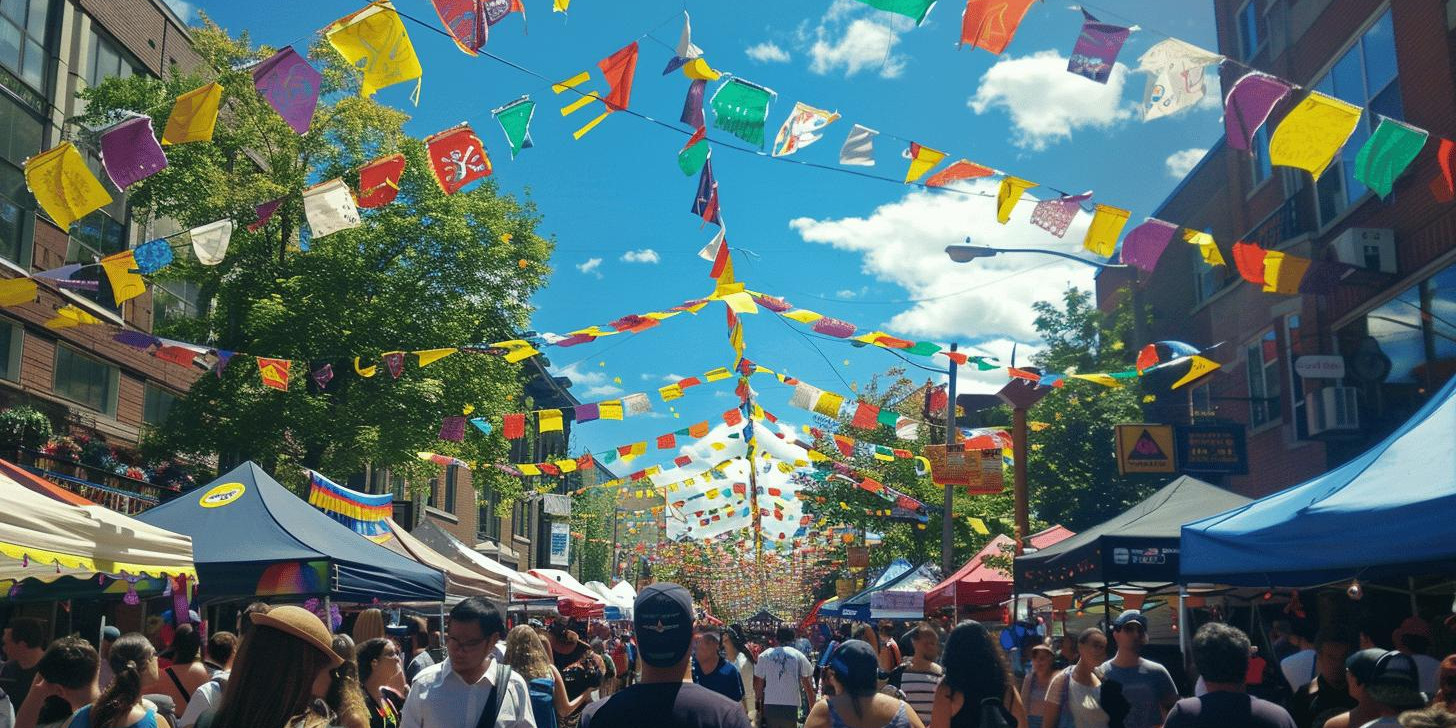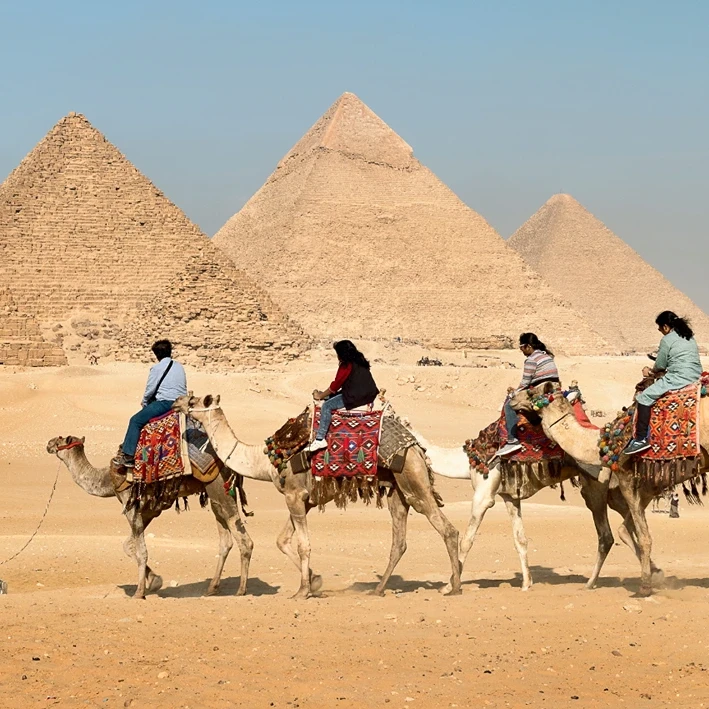Can you imagine attending a world-renowned jazz festival under a perfect summer sky or soaking in the vibrant fall colors at a harvest festival? Figuring out the best time to visit Montreal often hinges on one key factor: the city’s spectacular festival calendar. From the lively summer events to the picturesque fall festivities, Montreal offers unique experiences in each season. If you’re keen on immersing yourself in this festival paradise, understanding the optimal times to plan your trip can make all the difference. Ready to explore Montreal’s festival seasons? Let’s dive in.
Table of Contents
Best Time to Visit Montreal by Season
Early summer (June and July) and early fall (September and early October) are the best times to visit Montreal. These periods offer a pleasant blend of warm weather, numerous festivals, and moderate tourist crowds.
Summer in Montreal, spanning from June to August, is characterized by temperatures ranging from 68 to 79 degrees Fahrenheit (20 to 26 degrees Celsius). It’s the peak tourist season and features numerous festivals, such as the Montreal International Jazz Festival and L’International des Feux Loto-Quebec. Visitors can enjoy outdoor dining, explore the city by foot or bike, and participate in various cultural events.
Fall, from September to November, brings cooler temperatures ranging from 34 to 70 degrees Fahrenheit (1 to 21 degrees Celsius). This season is ideal for viewing fall foliage, especially in early to mid-October. Popular spots for enjoying the autumn colors include Beaver Lake, Parc Jean-Drapeau, and the Montreal Botanical Garden. Additionally, fall offers lower hotel prices and fewer crowds, making it a cost-effective and serene time to visit.
Winter, from December to February, transforms Montreal into a winter wonderland with temperatures often dipping into the 10s to 30s (Fahrenheit). Snow activities such as ice skating, skiing, and attending winter festivals like Luminothérapie are popular. Despite the cold, the holiday markets add a festive charm to the city during this season.
Spring, from March to May, has unpredictable weather with temperatures ranging from 40 to 79 degrees Fahrenheit (4 to 26 degrees Celsius). While it’s less ideal for travel due to melting snow and inconsistent weather conditions, May stands out with blooming magnolias and cherry blossoms, offering a picturesque view of the city.
Summary of Best Months to Visit:
- June and July: Ideal for summer festivals and outdoor activities.
- September and early October: Perfect for fall foliage and cooler weather.
- December to February: Best for snow activities and winter festivals.
- May: Great for spring blossoms and moderate temperatures.
Visiting Montreal in Spring
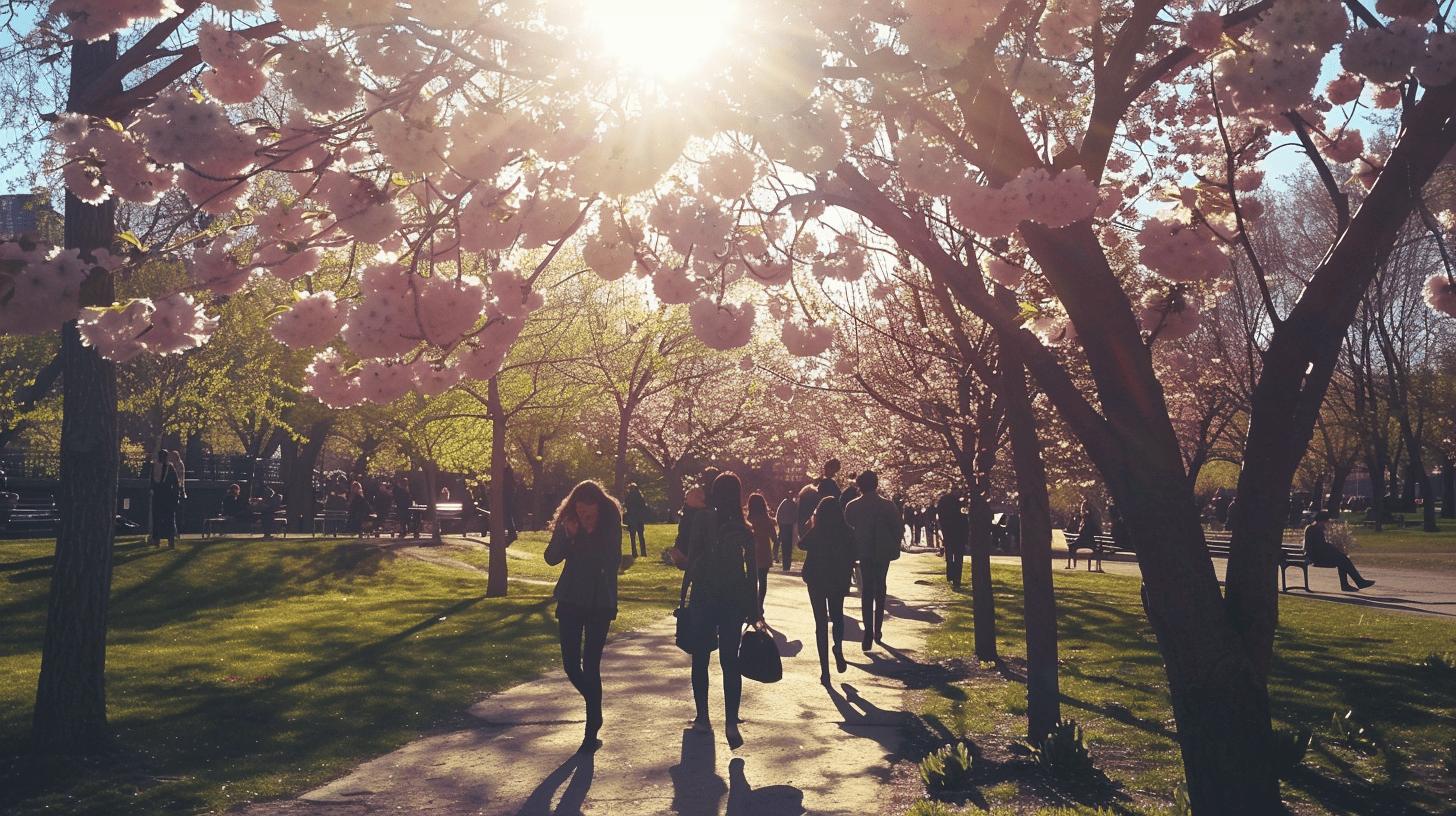
Spring temperatures in Montreal range from 40 to 79 degrees Fahrenheit (4 to 26 degrees Celsius). The season is marked by melting snow and blooming flowers, transforming the city into a picturesque haven. While the weather can be unpredictable, it gradually becomes warmer, making it a refreshing time to explore the city.
May is the standout month in spring, offering the best conditions for outdoor activities. The city becomes a vibrant canvas with blooming magnolias and cherry blossoms, providing a scenic backdrop for leisurely strolls and photography. The pleasant weather in May makes it ideal for enjoying outdoor meals at one of Montreal’s many charming cafes and restaurants.
Key activities during spring include exploring the city’s parks, such as Mount Royal and La Fontaine Park, which come alive with blossoming flowers and lush greenery. Outdoor dining becomes increasingly popular as temperatures rise, and the city’s numerous terraces offer the perfect setting for a meal with a view. Additionally, spring provides an excellent opportunity to attend local events and festivals that celebrate the season’s arrival.
Top Activities in Spring:
- Exploring Parks: Visit Mount Royal and La Fontaine Park for picturesque landscapes and blooming flowers.
- Outdoor Dining: Enjoy meals at outdoor terraces and cafes as the weather warms up.
- Seasonal Festivals: Attend local events celebrating the arrival of spring and the city’s vibrant flora.
Visiting Montreal in Summer
Summer in Montreal is characterized by warm temperatures ranging from 68 to 79 degrees Fahrenheit (20 to 26 degrees Celsius), although high humidity can make it feel hotter. This season marks the peak tourist period, attracting visitors eager to experience the city’s vibrant atmosphere and plethora of events.
One of the main draws of summer in Montreal is its extensive lineup of festivals. The Montreal International Jazz Festival, typically held in late June and early July, is one of the largest and most famous jazz festivals in the world, featuring hundreds of artists and performances across multiple stages. Another major event is L’International des Feux Loto-Quebec, an international fireworks competition that lights up the sky with stunning displays. This festival runs from late June to early August and offers a spectacular visual experience.
Exploring Montreal by foot or bike is particularly enjoyable in the summer. The city’s extensive network of bike paths and walkable neighborhoods make it easy to navigate and discover its many attractions. Whether it’s wandering through the historic streets of Old Montreal or biking along the Lachine Canal, there are endless opportunities to soak in the city’s charm.
Outdoor dining is another highlight of summer in Montreal. Numerous cafes and restaurants open their terraces, allowing patrons to enjoy delicious meals while taking in the lively street scenes. Popular spots include the cobblestone streets of Old Montreal and the bustling Plateau Mont-Royal area, known for its eclectic mix of eateries and vibrant nightlife.
Must-Attend Summer Festivals:
- Montreal International Jazz Festival: World-renowned jazz performances late June to early July.
- L’International des Feux Loto-Quebec: Spectacular fireworks competition from late June to early August.
- Just for Laughs Festival: Comedy festival featuring stand-up, improv, and more in mid-July.
- Osheaga Music and Arts Festival: A major music festival in early August featuring various genres.
Visiting Montreal in Fall
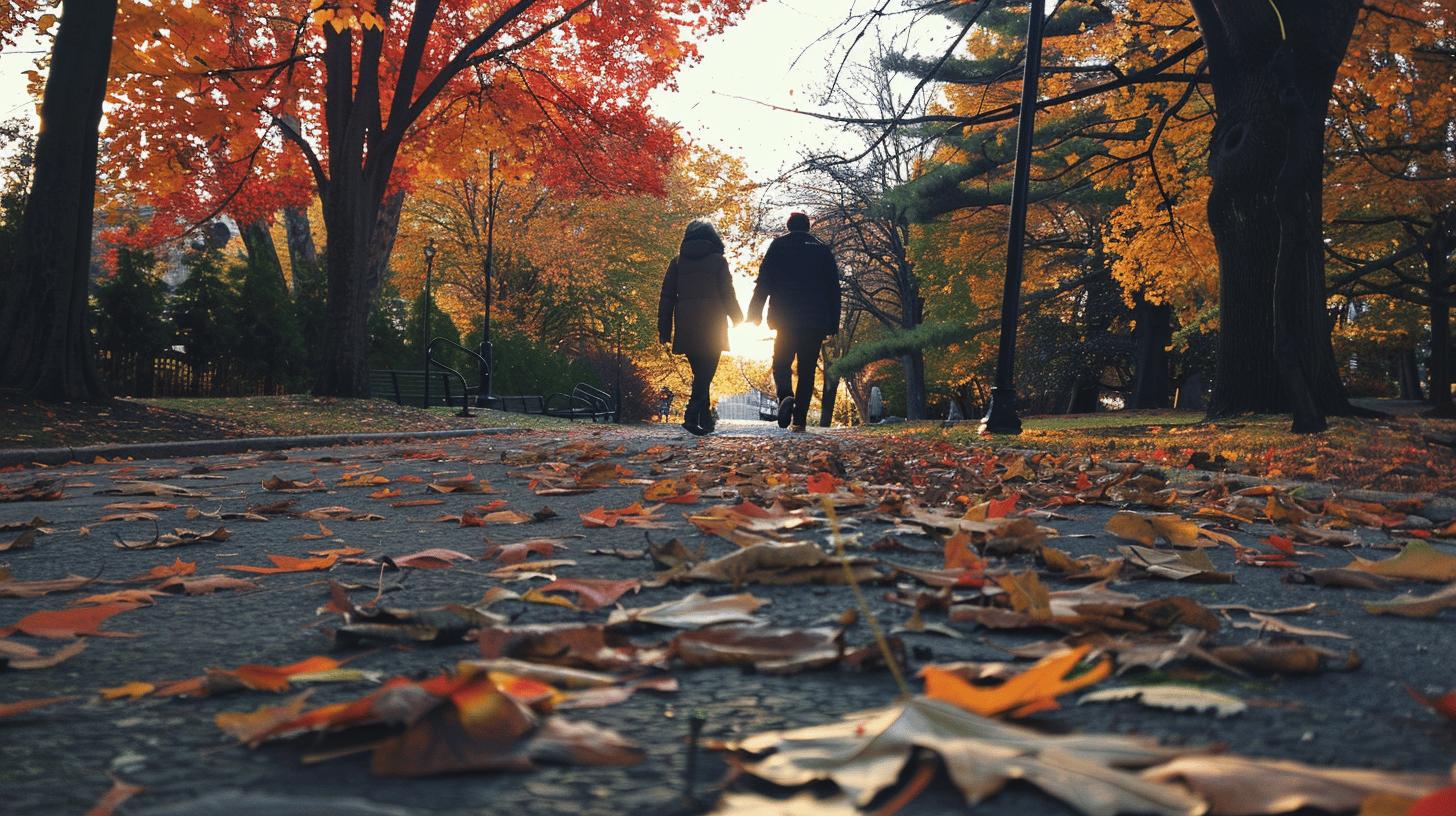
Fall temperatures in Montreal range from 34 to 70 degrees Fahrenheit (1 to 21 degrees Celsius), making it a season of cooling temperatures and vibrant foliage. Early to mid-October is the best time to witness the stunning fall colors, as the city’s parks and green spaces transform into a canvas of reds, oranges, and yellows. The crisp air and colorful leaves provide an inviting atmosphere for outdoor exploration.
Montreal offers a variety of fall events that take advantage of the season’s beauty. One notable event is the Gardens of Light at the Montreal Botanical Garden, where lanterns illuminate the garden’s pathways, creating a magical evening experience. Another key event is the Montreal International Black Film Festival, which showcases a diverse range of films from around the world. These festivals not only celebrate fall but also highlight the city’s rich cultural tapestry.
Exploring parks is a must-do activity in Montreal during fall. Beaver Lake on Mount Royal is a popular spot, offering picturesque views and serene walking paths. Parc Jean-Drapeau, located on Île Sainte-Hélène, provides expansive spaces perfect for picnics amidst the changing leaves. Additionally, the Montreal Botanical Garden offers a stunning display of autumn colors, making it an ideal destination for nature lovers and photographers alike.
Top Locations for Viewing Fall Foliage:
- Beaver Lake on Mount Royal: Offers picturesque views and serene walking paths.
- Parc Jean-Drapeau: Expansive spaces perfect for picnics amidst the changing leaves.
- Montreal Botanical Garden: A stunning display of autumn colors, ideal for nature lovers and photographers.
Visiting Montreal in Winter
Winter temperatures in Montreal range from lows in the 10s to highs in the 20s and 30s (Fahrenheit). Such conditions transform the city into a winter wonderland, characterized by regular snowfall and frequent snowstorms. The cold weather creates the perfect setting for various winter activities, making it a unique time to explore the city’s offerings.
One of the most popular winter activities in Montreal is ice skating. The city boasts several outdoor rinks, including the picturesque rink in Old Montreal at the Old Port. Skaters can enjoy the historic surroundings while gliding on the ice. Another favorite is the rink on Beaver Lake, located on Mount Royal, which offers a serene and scenic skating experience.
Skiing and snowboarding are also widely enjoyed winter sports in Montreal. Mont-Royal itself provides opportunities for cross-country skiing and snowshoeing, while nearby ski resorts such as Mont Tremblant and Mont Saint-Sauveur offer downhill skiing options. These resorts are easily accessible from the city and provide a range of slopes for different skill levels.
Winter festivals are a significant highlight in Montreal during this season. Luminothérapie is a standout event, featuring interactive light installations and art displays throughout the Quartier des Spectacles. This festival brings a touch of magic to the cold nights and is a must-see for visitors. Additionally, holiday markets like the Atwater Market and Jean-Talon Market offer festive shopping experiences, with local crafts, food, and holiday decorations.
Top Winter Activities:
- Ice Skating: Outdoor rinks at Old Port and Beaver Lake.
- Skiing and Snowboarding: Cross-country skiing on Mont-Royal and downhill skiing at nearby resorts.
- Luminothérapie: Interactive light installations and art displays.
- Holiday Markets: Festive shopping at Atwater Market and Jean-Talon Market.
Weather Patterns and Tourist Seasons in Montreal
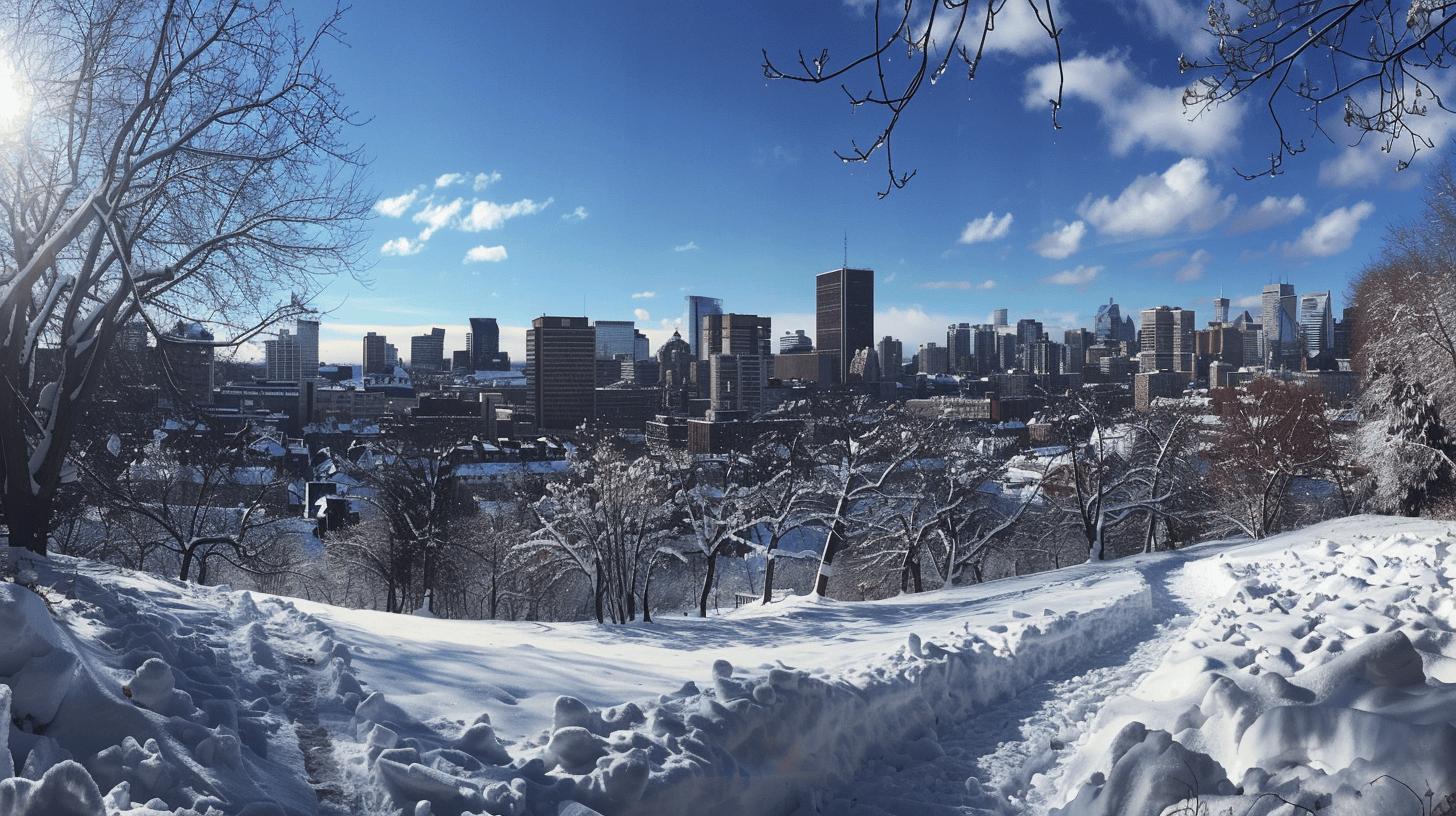
Peak tourist season in Montreal spans from May to September, characterized by warm weather and high humidity. This period attracts the most visitors, drawn by numerous festivals and outdoor activities. July is typically the hottest month, with average temperatures ranging from 68 to 79 degrees Fahrenheit (20 to 26 degrees Celsius). The warm weather makes it ideal for exploring the city on foot or by bike and enjoying outdoor dining.
The shoulder seasons, March-April and October-November, offer a more relaxed experience with fewer crowds and lower accommodation prices. During these months, temperatures are milder, making it a comfortable time to visit without the peak season rush. These periods are also perfect for budget-conscious travelers who prefer quieter settings. October, with its fall foliage, provides a picturesque backdrop for sightseeing.
Winter, from December to February, is the off-peak season due to cold temperatures and frequent snowstorms. Despite the harsh weather, winter in Montreal has its charm, transforming the city into a snowy wonderland. Average temperatures during this period are the lowest of the year, often falling into the 10s to 30s Fahrenheit. This season is ideal for those who enjoy winter sports and activities like ice skating and skiing, as well as festive holiday markets.
| Month | Avg. Temp (F) | Tourist Level | Recommendation |
|---|---|---|---|
| January | 10-30 | Low | Winter sports, holiday markets |
| February | 10-30 | Low | Winter sports, Luminothérapie |
| March | 25-41 | Medium | Fewer crowds, lower prices |
| April | 36-55 | Medium | Fewer crowds, spring blossoms |
| May | 48-66 | High | Spring festivals, outdoor dining |
| June | 57-75 | High | Summer festivals, outdoor activities |
| July | 68-79 | High | Ideal for all outdoor activities |
| August | 65-77 | High | Music and arts festivals |
| September | 57-70 | High | Early fall foliage, cooler weather |
| October | 45-57 | Medium | Fall foliage, fewer crowds |
| November | 34-45 | Medium | Lower prices, fall events |
| December | 20-34 | Low | Snow activities, holiday markets |
Final Words
Early summer and early fall are the best times to visit Montreal, offering comfortable weather and diverse activities.
Summer is prime for festivals and outdoor fun, while fall showcases stunning foliage and cooler temperatures.
Winter invites snow activities and cozy festivities, though it can be extremely cold. Spring is less predictable but has blooming flowers and milder days.
When deciding the best time to visit Montreal, consider the season that aligns best with your interests, ensuring a memorable trip.
FAQ
Best Time to Visit Montreal and Quebec City
Travel Logistics and Activities
Seasonal Insights
Budget and Planning
Hazel Wall is a passionate traveler, writer, and explorer dedicated to sharing her experiences and insights with fellow adventurers. With a background in journalism and a deep love for discovering new cultures, Hazel has journeyed across continents, immersing herself in diverse landscapes and traditions.


